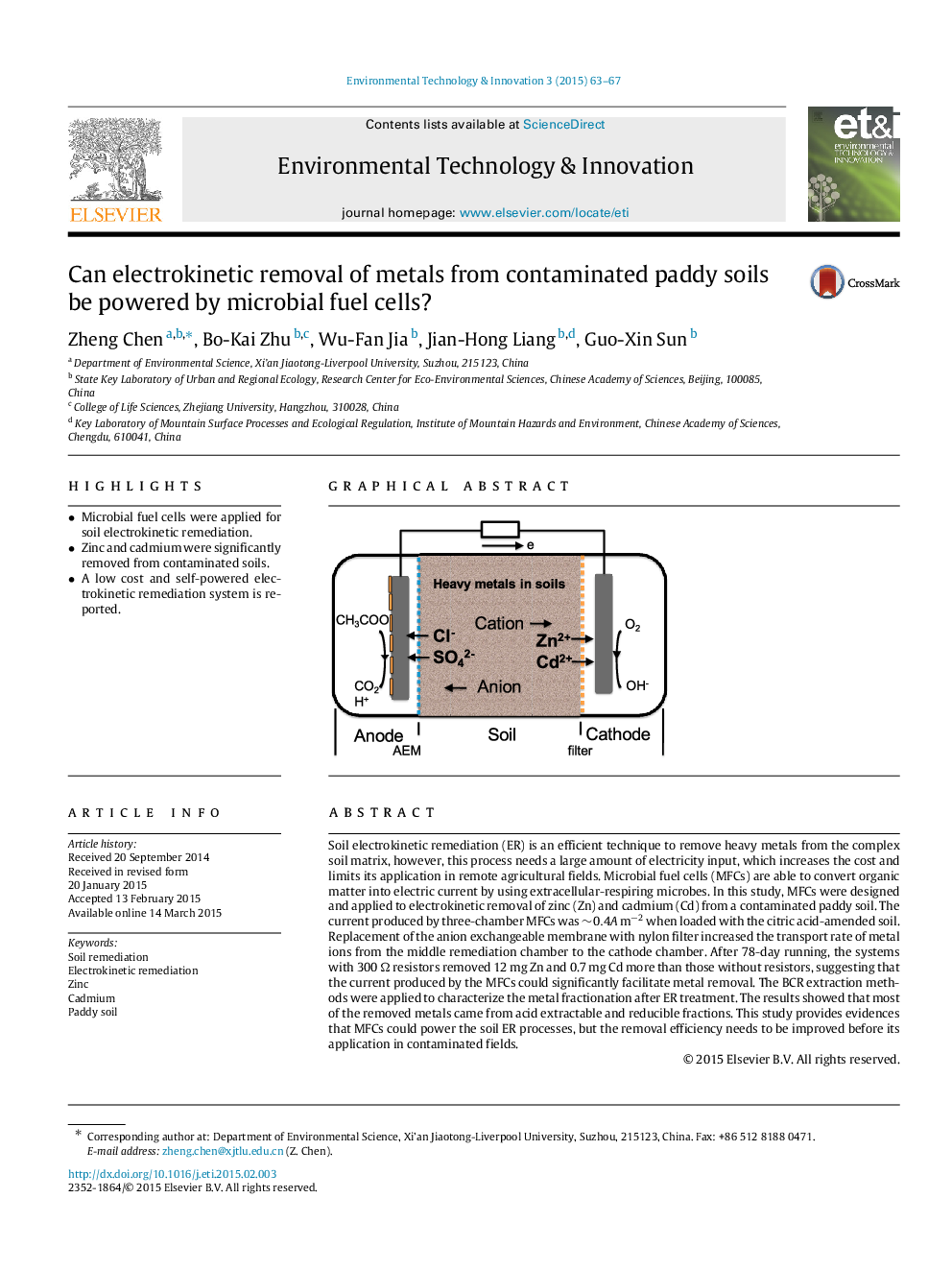| Article ID | Journal | Published Year | Pages | File Type |
|---|---|---|---|---|
| 4428176 | Environmental Technology & Innovation | 2015 | 5 Pages |
•Microbial fuel cells were applied for soil electrokinetic remediation.•Zinc and cadmium were significantly removed from contaminated soils.•A low cost and self-powered electrokinetic remediation system is reported.
Soil electrokinetic remediation (ER) is an efficient technique to remove heavy metals from the complex soil matrix, however, this process needs a large amount of electricity input, which increases the cost and limits its application in remote agricultural fields. Microbial fuel cells (MFCs) are able to convert organic matter into electric current by using extracellular-respiring microbes. In this study, MFCs were designed and applied to electrokinetic removal of zinc (Zn) and cadmium (Cd) from a contaminated paddy soil. The current produced by three-chamber MFCs was ∼0.4Am−2 when loaded with the citric acid-amended soil. Replacement of the anion exchangeable membrane with nylon filter increased the transport rate of metal ions from the middle remediation chamber to the cathode chamber. After 78-day running, the systems with 300 Ω resistors removed 12 mg Zn and 0.7 mg Cd more than those without resistors, suggesting that the current produced by the MFCs could significantly facilitate metal removal. The BCR extraction methods were applied to characterize the metal fractionation after ER treatment. The results showed that most of the removed metals came from acid extractable and reducible fractions. This study provides evidences that MFCs could power the soil ER processes, but the removal efficiency needs to be improved before its application in contaminated fields.
Graphical abstractFigure optionsDownload full-size imageDownload as PowerPoint slide
